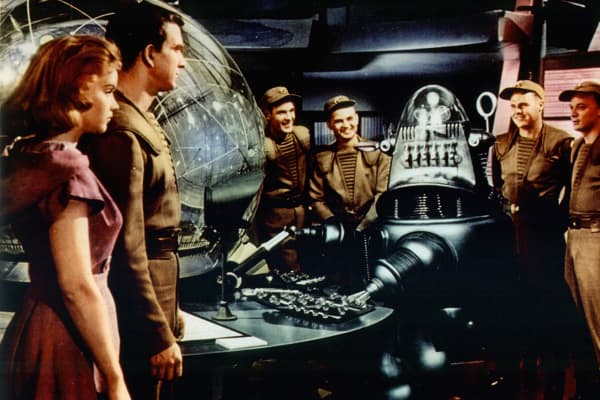
Metro-Goldwyn-Mayer | Getty Images
Anne Francis and Leslie Nielsen watch as the robot takes the controls of the spaceship in a scene from the film “Forbidden Planet.”
What happens when founders are not able to release control of their company? The invisible killing monster is released, fed by the unconscious "evil selves" of the founders, and he gradually destroys everything in his path.
Founders tend to protect their parcels of control and finally retreat to their comfort zones, limiting the ability of the company to grow and embrace new initiatives. Talent is lost, as there are no proper long-term retention mechanisms. People and management lose faith in the company. With time a zero-risk policy becomes the default decision-making criteria, and the CFO takes over the reins.
Your ability to foresee the founder's trap event and align your partners, shareholders and company's interests for a successful transition relies on having the skills of these three people.
Otherwise, all you have been fighting so hard for will be lost.
— By Ed Fernandez, early stage venture capitalist, advisor, investor, analyst and entrepreneur; former BlackBerry executive and a member of the CNBC-YPO Chief Executive Network.
About YPO
CNBC and YPO (Young Presidents' Organization) have formed an exclusive editorial partnership consisting of regional Chief Executive Networks in the Americas, EMEA and Asia-Pacific. These Chief Executive Networks are made up of a sample of YPO's unrivaled global network of 20,000 top executives from 120 countries who are on the front lines of the economy. The opinions of Chief Executive Network members are solely their own and do not reflect the opinions of YPO as a whole or CNBC.




